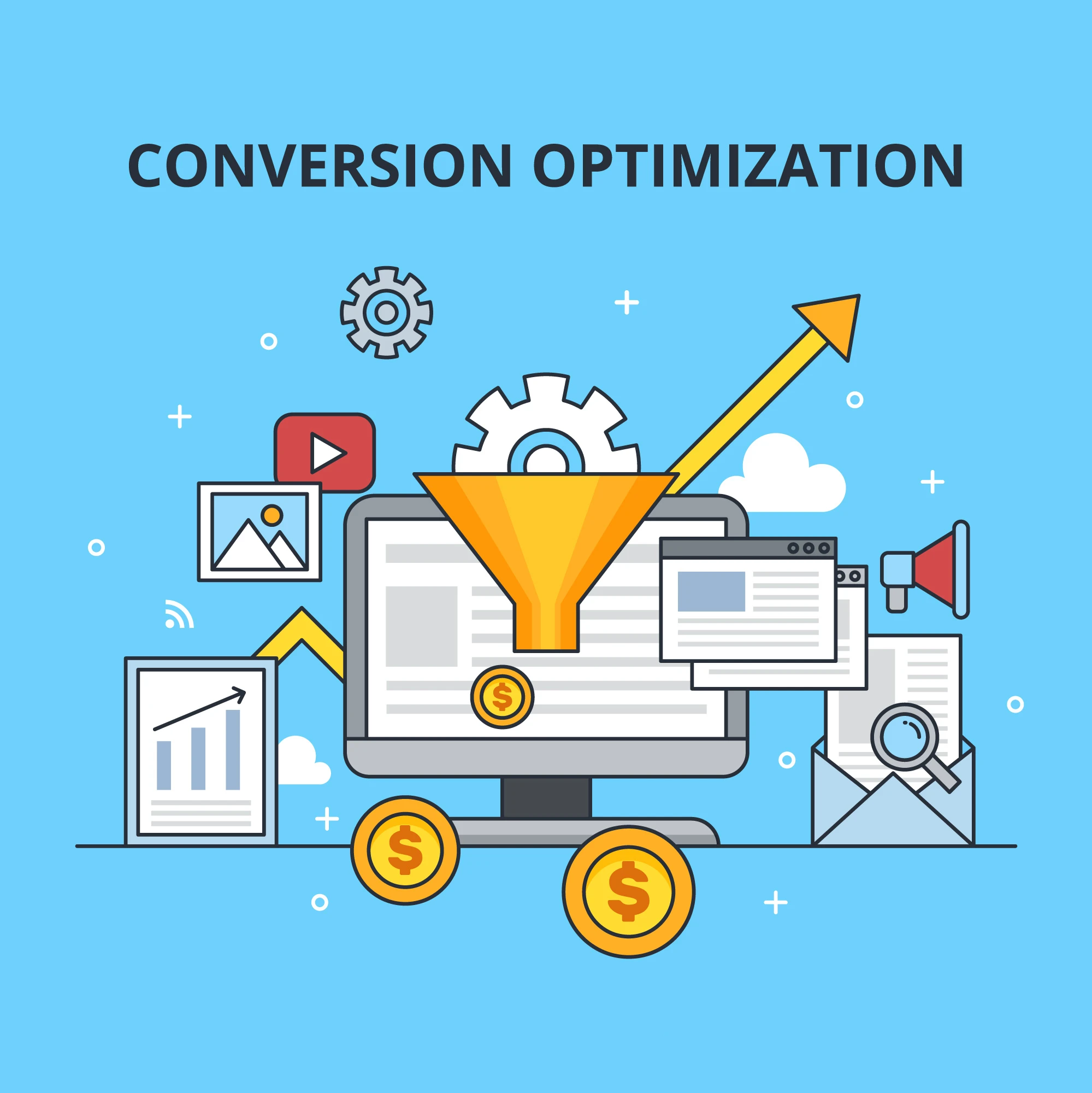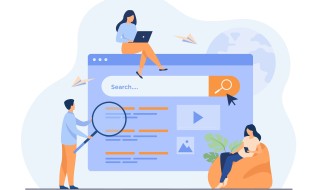
You've invested time, effort, and potentially significant resources into driving traffic to your website. Visitors are arriving and clicking around, but are they taking the actions that actually grow your business? Getting traffic is only half the battle. The real magic happens when those visitors convert – whether that means making a purchase, filling out a contact form, signing up for a newsletter, or downloading a resource.
This crucial metric is your conversion rate: the percentage of visitors who complete a desired action on your site. A low conversion rate means missed opportunities and wasted traffic. Conversely, even a small increase in your conversion rate can significantly impact your revenue and ROI without needing a single extra visitor.
So, how do you turn more browsers into buyers, leads, or subscribers? This comprehensive guide dives deep into the strategies and tactics you need to optimize your website for higher conversions.
What Exactly IS a Conversion?
Before we optimize, let's clarify. A "conversion" is any meaningful action you want a visitor to take on your website. These can be:
- Macro Conversions: The primary goals, often directly tied to revenue (e.g., completing a purchase, requesting a quote, signing up for a paid service).
- Micro Conversions: Smaller steps that indicate engagement and move a visitor closer to a macro conversion (e.g., signing up for an email list, downloading a guide, watching a product video, adding an item to the cart).
Understanding both types is vital for optimizing the entire customer journey.
Step 1: Understand Your Starting Point - Analytics are Key
You can't improve what you don't measure. Before making changes, you need a baseline.
- Set Up Analytics: Use web analytics tools (like Google Analytics) to track your current conversion rates for your key goals. Understand where visitors are coming from, which pages they visit, and where they drop off.
- Define Your Goals: Clearly define what constitutes a conversion for your specific business and set these up as trackable goals in your analytics platform.
- Know Your Audience: Who are you trying to reach? Develop buyer personas representing your ideal customers. Understand their needs, pain points, motivations, and technical savviness. What questions do they have? What information do they need to feel confident?
- Map the User Journey: How do visitors typically navigate your site before converting (or dropping off)? Identifying common paths and friction points is crucial. Heatmaps, session recordings, and user surveys can provide invaluable qualitative insights here.
Step 2: Optimize Your Website Design and User Experience (UX)
First impressions matter immensely online. A confusing, slow, or unprofessional-looking website will kill conversions before you even get a chance.
- Intuitive Navigation: Make it effortless for visitors to find what they're looking for. Use clear labels, logical hierarchies, and ensure your main navigation is consistent across all pages. A search bar is essential for larger sites.
- Clean and Professional Design: Your website's aesthetic should align with your brand and build trust. Use high-quality images and videos, maintain visual consistency (colors, fonts, spacing), and avoid clutter.
- Visual Hierarchy: Guide the visitor's eye towards the most important elements (like your value proposition and CTAs) using size, color, contrast, and placement.
- Readability: Use legible fonts, appropriate font sizes, sufficient contrast between text and background, and break up large blocks of text with headings, subheadings, bullet points, and white space.
- Mobile-First Design: With a majority of web traffic often coming from mobile devices, your site must be fully responsive and easy to use on smaller screens. Test navigation, forms, and button sizes specifically for mobile users.
Step 3: Craft Compelling Content and Messaging
Your website's words and visuals need to persuade visitors that you offer the solution they need.
- Crystal Clear Value Proposition (UVP): Within seconds of landing on your homepage (or any key landing page), visitors should understand:
- What you offer.
- Who it's for.
- Why they should choose you over competitors. Your UVP should be prominent, concise, and benefit-oriented.
- Benefit-Driven Headlines: Don't just state what something is; state what it does for the customer. Focus on solving their problems or fulfilling their desires.
- Persuasive Copy: Go beyond listing features. Explain the benefits of those features. Use language that resonates with your target audience, addresses their pain points directly, and clearly communicates the value of taking action.
- High-Quality Product/Service Descriptions: Provide detailed information, high-resolution images (from multiple angles), videos (if applicable), specifications, and answer potential questions proactively.
- Targeted Landing Pages: If running ad campaigns or specific promotions, send traffic to dedicated landing pages that match the ad's message and focus on a single conversion goal. Avoid distracting navigation or competing offers on these pages.
Step 4: Master the Call to Action (CTA)
Your CTAs are the gateways to conversion. They need to be obvious, compelling, and easy to act upon.
- Make Them Stand Out: Use contrasting colors, strategic placement (above the fold, within relevant content, at the end of pages/posts), and sufficient size to ensure your CTAs grab attention.
- Use Action-Oriented Language: Instead of passive words ("Submit," "Click Here"), use specific, benefit-driven text ("Get Your Free Quote," "Download the Ebook Now," "Start Your 14-Day Trial," "Shop the Sale").
- Clarity is Key: Visitors should know exactly what will happen when they click the button. Avoid ambiguity.
- Placement Matters: Don't rely on a single CTA at the bottom of the page. Place relevant CTAs contextually throughout your content and ensure key pages have prominent primary CTAs.
- Reduce Choice Overload: While secondary CTAs can be useful, ensure your primary desired action is the most prominent. Too many competing CTAs can confuse visitors.
Step 5: Build Trust and Credibility
People won't convert if they don't trust you. Especially if a purchase or sensitive information is involved.
- Social Proof: Display customer testimonials, reviews, ratings, case studies, and client logos prominently. Real feedback from real people is incredibly powerful.
- Security Signals: Use HTTPS (SSL certificate) across your entire site. Display trust badges (e.g., security seals, payment processor logos, industry association memberships) clearly, especially near forms and checkout areas.
- Clear Contact Information: Make it easy for visitors to contact you. Provide a phone number, email address, physical address (if applicable), and potentially live chat support. An accessible "About Us" page also helps build trust.
- Professionalism: As mentioned in UX, a polished, error-free website inherently builds more trust than one that looks amateurish or outdated.
- Guarantees and Policies: Clearly state your return policy, satisfaction guarantees, privacy policy, and terms of service. This reduces perceived risk for the visitor.
Step 6: Streamline Forms and Checkout Processes
Friction kills conversions, and forms/checkouts are common friction points.
- Keep Forms Simple: Only ask for information that is absolutely necessary for the specific conversion. Every extra field increases the chance of abandonment.
- Clear Instructions and Error Handling: Label fields clearly. If errors occur, highlight exactly which field needs correction and explain why in plain language.
- Optimize Checkout:
- Offer a guest checkout option (don't force account creation).
- Show progress indicators for multi-step checkouts.
- Be transparent about all costs upfront (shipping, taxes).
- Offer multiple popular payment options.
- Reassure users about security throughout the process.
- Minimize distractions during checkout.
Step 7: Prioritize Website Speed and Performance
Slow loading times are conversion killers. Visitors are impatient.
- Optimize Images: Compress images without sacrificing acceptable quality. Use modern formats like WebP.
- Leverage Browser Caching: Store parts of your website locally on visitors' browsers so pages load faster on subsequent visits.
- Minimize Code: Reduce unnecessary HTML, CSS, and JavaScript code. Minify files where possible.
- Choose Quality Hosting: Your hosting provider significantly impacts site speed. Ensure your plan can handle your traffic levels.
- Use a Content Delivery Network (CDN): CDNs store copies of your site on servers around the world, delivering content faster to visitors based on their geographic location.
Step 8: Test, Measure, Refine - The Power of A/B Testing
Conversion Rate Optimization (CRO) is not a one-time fix; it's an ongoing process of improvement driven by data.
- A/B Testing (Split Testing): This is the cornerstone of CRO. Create two versions of a page element (e.g., a headline, CTA button color, image) and show each version to a different segment of your audience. Measure which version leads to a higher conversion rate.
- What to Test: You can test almost anything:
- Headlines and subheadings
- Body copy and value propositions
- CTA text, color, size, and placement
- Images and videos
- Form layouts and field numbers
- Page layouts and navigation
- Offers and pricing
- Test One Thing at a Time: To understand what truly impacts conversions, isolate your changes. If you change the headline and the CTA color simultaneously, you won't know which change caused the result.
- Run Tests Long Enough: Ensure you collect enough data for statistically significant results. Don't end a test prematurely based on early trends.
- Learn and Iterate: Use the insights gained from testing to make permanent improvements and then identify the next element to optimize.
Putting It All Together
Increasing your website's conversion rate isn't about finding one magic bullet. It's about understanding your audience, removing friction, building trust, clearly communicating value, and making it easy for visitors to take the desired action. It requires a holistic approach that considers design, usability, content, technical performance, and continuous testing.
Implementing these strategies takes time and focused effort, but the rewards – increased leads, sales, and overall business growth – are well worth it. Start by analyzing your data, identifying the biggest opportunities for improvement (often called the "low-hanging fruit"), and systematically testing your way to higher conversion rates.
Disclaimer: While this article provides comprehensive strategies, achieving significant results often benefits from expert analysis and implementation. If you're looking to accelerate your website's performance and conversion rates, consider partnering with experienced professionals like Webxloo who specialize in web development, UX optimization, and digital strategy.




 Phone Consultation
Phone Consultation
 Request a quote
Request a quote
 Text a Message
Text a Message